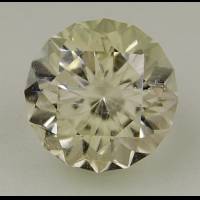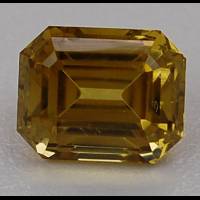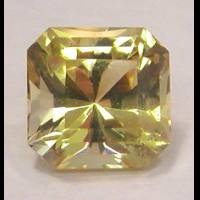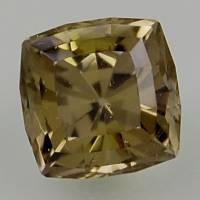Baryte (Barite)

South Africa
14.82 carats
© Rarestone.com
Many large transparent crystals have been found. Easy cleavage, brittleness and heat sensitivity of the material make it a challenge to the facetier. Cut stones rarely exceed 10 carats.
Baryte Gemstones by Colour
This table shows the variety of hues this gemstone can be found in. Click on a photo for more information.
Baryte Gemstones by Size
This table shows distribution of Baryte gemstone sizes that are listed on this site. This can give a good indication as to the general availability of this gemstone in different sizes.
Contributed photos
Lightest:1.99 cts
Heaviest:14.82 cts
Average:8.98 cts
Total photos:5
Do you have a larger Baryte? Why not upload a photo?
| General Information | |||||||||||||||||
|---|---|---|---|---|---|---|---|---|---|---|---|---|---|---|---|---|---|
| Other Names/Trade Names: | |||||||||||||||||
| Chemical Formula |
| ||||||||||||||||
| Physical Properties of Baryte | |||||||||||||||||
| Mohs Hardness | 3 to 3.5, Blue Chart Gem Identification (2010) More from other references | ||||||||||||||||
| Specific Gravity | 4.43 to 4.46, Gemstones of the world (2001) More from other references | ||||||||||||||||
| Tenacity | Brittle, Blue Chart Gem Identification (2010) | ||||||||||||||||
| Cleavage Quality | Perfect, Blue Chart Gem Identification (2010) More from other references | ||||||||||||||||
| Fracture | Uneven, Gemstones (2009) | ||||||||||||||||
| Heat Sensitivity | Very high, Gemstones (2009) | ||||||||||||||||
| Optical Properties of Baryte | |||||||||||||||||
| Refractive Index | 1.634 to 1.648, Blue Chart Gem Identification (2010) More from other references | ||||||||||||||||
| Optical Character | Biaxial/+, Blue Chart Gem Identification (2010) More from other references | ||||||||||||||||
| Birefringence | 0.010 to 0.018, Blue Chart Gem Identification (2010) More from other references | ||||||||||||||||
| Pleochroism | Nil, Gemstones (2009) | ||||||||||||||||
| Dispersion | Weak, Gemstones (2009) | ||||||||||||||||
| Colour | |||||||||||||||||
| Colour (General) | Colourless, white, yellowish, reddish, bluish, green, brown, gray, black, Gemmological Tables (2004) More from other references | ||||||||||||||||
| Transparency | Transparent,Translucent,Opaque, Gemmological Tables (2004) More from other references | ||||||||||||||||
| Lustre | Vitreous, Gemstones of the world (2001) More from other references | ||||||||||||||||
| Fluorescence & other light emissions | |||||||||||||||||
| Fluorescence (General) | (LW): Inert to partly chalky cream, bluish, greenish (and phosphorescence), Blue Chart Gem Identification (2010) More from other references | ||||||||||||||||
| Crystallography of Baryte | |||||||||||||||||
| Crystal System | Orthorhombic, Blue Chart Gem Identification (2010) More from other references | ||||||||||||||||
| Habit | Bladed, tabular, Gemstones (2009) | ||||||||||||||||
| Geological Environment | |||||||||||||||||
| Where found: | Barite is the most common barium mineral and occurs in low-temperature hydrothermal veins and in residual deposits from weathered barium-bearing limestones., Gems, Sixth Edition (2006) | ||||||||||||||||
| Further Information | |||||||||||||||||
| Mineral information: | Baryte information at mindat.org | ||||||||||||||||
| Significant Gem Localities | |||||||||||||||||
| |||||||||||||||||




